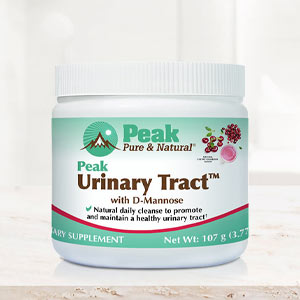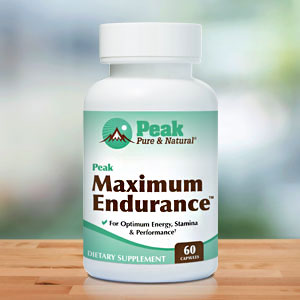Get Easy Health Digest™ in your inbox and don’t miss a thing when you subscribe today. Plus, get the free bonus report, Mother Nature’s Tips, Tricks and Remedies for Cholesterol, Blood Pressure & Blood Sugar as my way of saying welcome to the community!
One simple action that lowers postmenopausal blood pressure

Menopause is not great for heart health. The drop in estrogen causes blood vessels to become stiffer, which contributes to higher blood pressure.
Speaking for myself, I saw my blood pressure rise about 10 points once I hit menopause. I’m still within the normal range, but I know I need to be careful to keep it from going any higher.
Luckily, there’s an effortless action that can help offset this risk in menopausal and postmenopausal women — one that literally takes seconds to do…
The simple power of standing up
Sitting for long periods of time, something that according to research, postmenopausal women often do, can compound the risks for heart trouble, as well as risks for type 2 diabetes, cancer and early death.
The Rise for Health Study evaluated methods for changing sitting behaviors and examined the physiological impacts on blood pressure and blood sugar levels in overweight or obese postmenopausal women.
Researchers focused on two specific behaviors over three months. One group was simply told to try to sit less during the day. The other was instructed to focus on standing from a sitting position more frequently. Both these groups were compared to a control group that received general health tips but were not asked to change their sitting habits.
When looking at blood sugar, the researchers found that sitting less or standing up more often showed no significant improvement in blood sugar.
However, things were a bit different for blood pressure. The “sit less” group, which cut their sitting time by 75 minutes a day, showed some improvements in blood pressure, though it did not meet statistical significance.
Meanwhile, women in the “sit-to-stand” group, who increased the number of times they stood up by an average of 25 per day, lowered their diastolic blood pressure by 2.24 mmHg more than the control group. Though this change was not in the clinically meaningful range of 3-5 mmHg, it was a measurable enough decrease for researchers to say that within just three months, increasing sit-to-stand behavior can lower diastolic blood pressure.
In short, the findings suggest that frequently taking short standing breaks, even without increasing intense exercise, may help boost cardiovascular health.
“Public health messaging urges us to sit less but doesn’t tell us the best ways to do that,” says first author Dr. Sheri Hartman, a professor at UC San Diego. “Our findings suggest that while sitting less was helpful, interrupting sitting with brief standing breaks — even if you don’t sit less — can support healthy blood pressure and improve health.”
How often should you be getting up?
According to the researchers, additional improvements may require more than three months to take effect, so they intend to evaluate both behaviors over a longer period in older men and women.
“What excites me most about this study is that women set their own goals and made a real difference in their sitting behaviors,” says co-author Dr. Andrea LaCroix, also a UC San Diego professor. “With a little coaching, we can teach ourselves to sit less, and it makes a tangible difference to our short-and long-term health.”
When discussing what goals would be doable for people looking to improve their heart health, LaCroix recommends standing two times per hour over 12 hours as a good starting point.
Given that my job involves a lot of sitting, I’m determined to adopt this behavior. But one problem I have is that I get so absorbed in the work I’m doing that I often lose track of time. The next thing I know, two or three hours have gone by without my moving from my seat.
The solution? Set a reminder. I usually have my phone right by me when I work, so I plan to set a recurring reminder twice an hour to get up from my computer.
If you prefer to have the reminder right on your computer, there are plenty of reminder apps (like Any.do or ClickUp) you can download for that purpose.
Editor’s note: Did you know that when you take your body from acid to alkaline you can boost your energy, lose weight, soothe digestion, avoid illness and achieve wellness? Click here to discover The Alkaline Secret to Ultimate Vitality and revive your life today!
Sources:
Just rise: Study finds frequent standing may boost heart health after menopause — EurekAlert!
Arterial stiffness and hypertension — Clinical Hypertension















